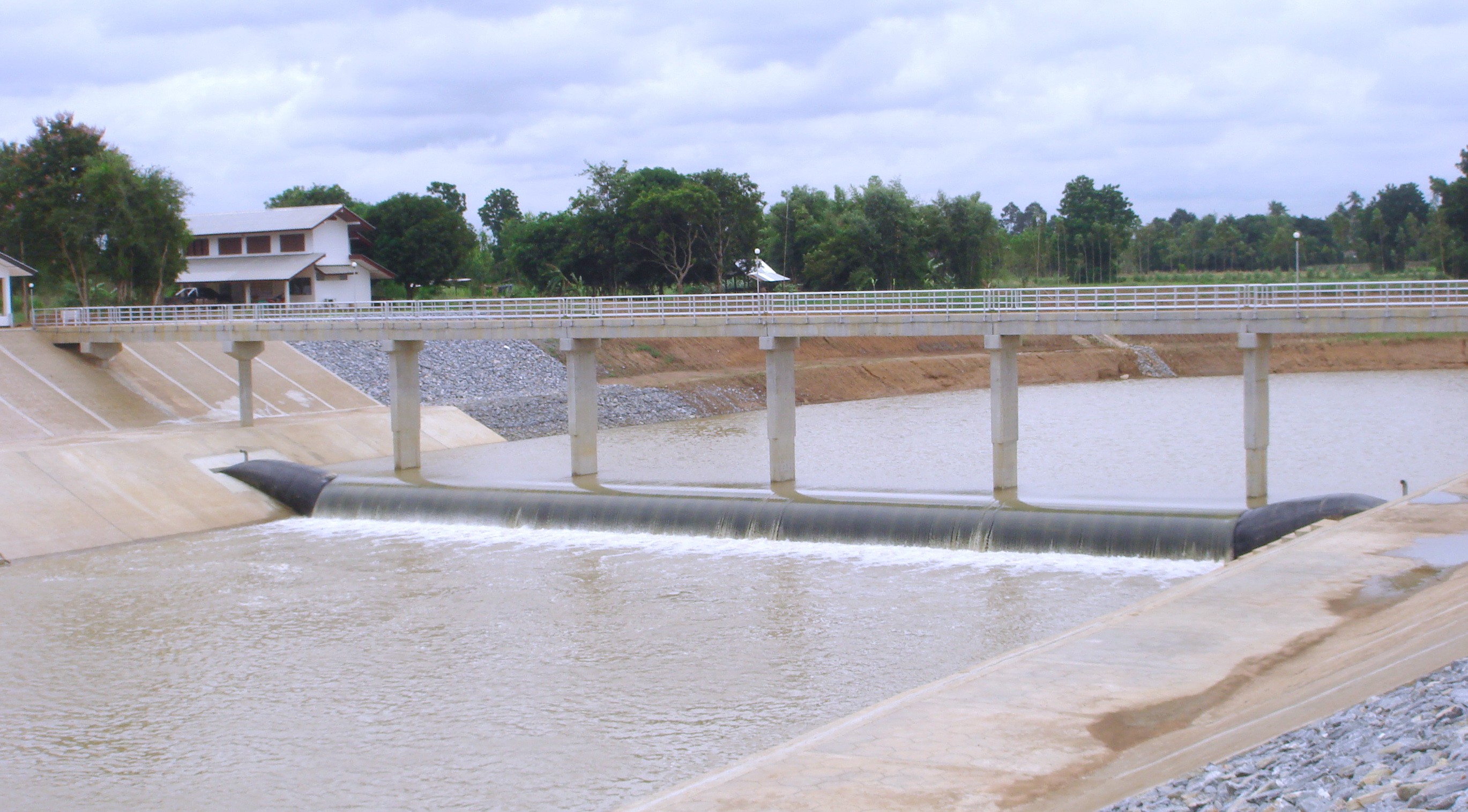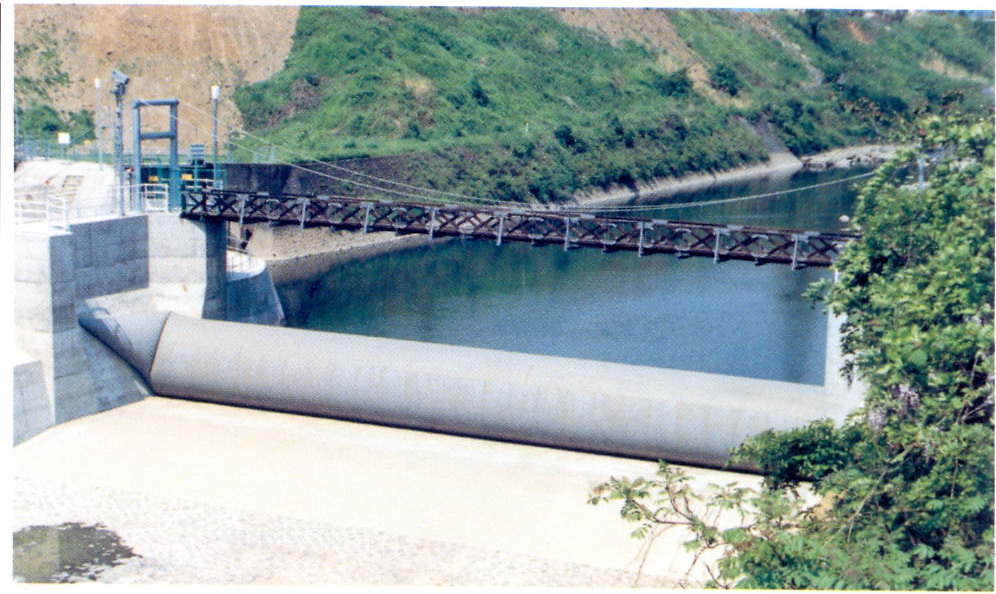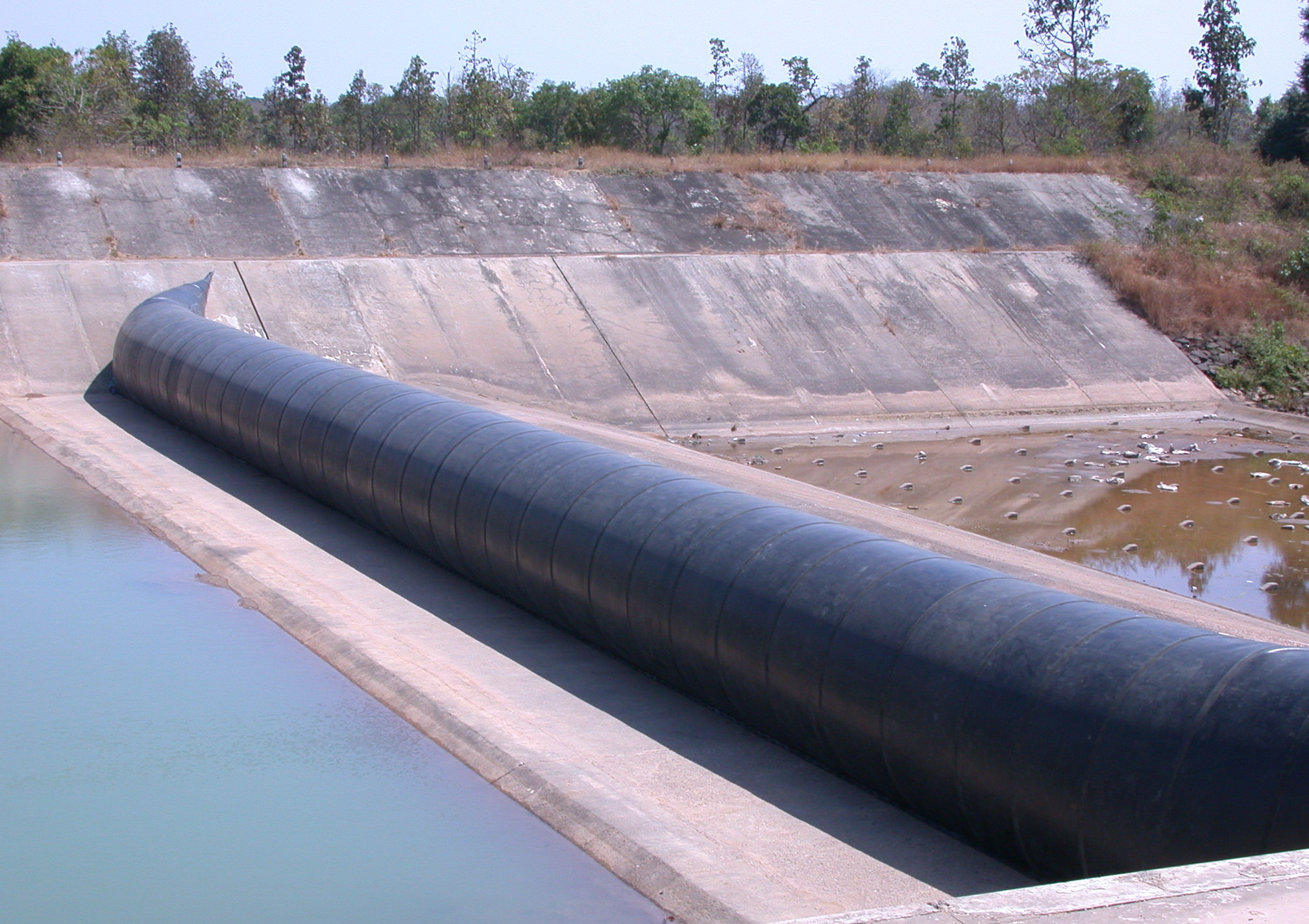 |
KRUNG THAI TRACTOR |
 |
 |
 |
 |
 |
 |
 |
 |
The Rubber Dam
 The rubber dams are made of high-strength synthetic fabrics supported by a frame and prefabricated rubber. The rubber tube is riveted on the concrete base, forming a sealed bag-shaped space, which shall be inflated with air or water in dry seasons to store water for agricultural, industrial and daily use, on the other hand during rainy seasons; water contained in rubber dam shall be discharged to prevent flooding during high flow.
The rubber dam has provided engineers with a practical and economic alternative to more conventional methods of water flow control. One of the unique features and benefits of the rubber dam is its ability to deflate quickly and easily to prevent flooding.
The durability of the rubber fabric material has been proven through extensive testing of fabric samples and monitoring of actual installations. Tests are routinely carries out to determine mechanical properties of the fabric such as tensile strength, elongation, etc, as well as the resistance of the fabric to abrasion, ultra-violet light, chemical attack. From the results of accelerated aging tests carried out under laboratory conditions, it has been ascertained that the design life of the rubber fabric will be at least 25 years.
One of the most advantages of the rubber dam over other water control structures such as steel gates is the ease and speed of installation. Whatever the size of the dam, it is delivered to site in one piece, ready for installation. The rubber dam is particularly suited to sites where the width of the structure is large in comparison to its height. Single spans over 100m wide are possible without the need for intermediary concrete piers. This will improve the flow characteristics of the river and also reduce the cost of the associated civil works. In addition, the other major advantage of the rubber dam over the steel gate is ease of maintenance. As the rubber dam has few moving parts, the cost of upkeep is minimal. The running costs are reasonably low; the only expense being the cost of fuel required to run the air blower or water pump, whichever is used to inflate the rubber tube.
  |